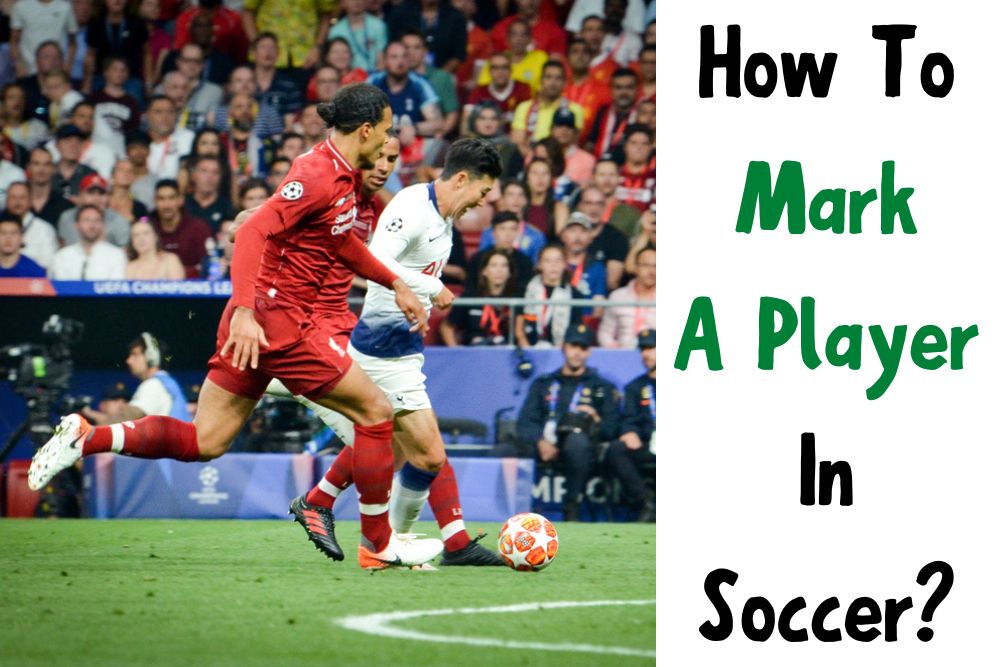Soccer like other sports is always going through subtle alterations which makes it more organized and structured. Aside from knowing basic skills and tactics in soccer, players are expected to know how to defend a ball—regardless of the position they play
Marking is a defensive tactic in soccer and its aim is to prevent opposing players from retaining the ball. They are numerous forms of marking, and we shall discuss all of them with their pros and cons.
Key Takeaways
- There are mainly three forms of marking in soccer
- Man-marking was the first form of marking in soccer
- Zonal marking is the most frequently used technique in recent times because it allows players to work together
Man-marking was a popular defensive tactic in soccer until the sprouting of other effective marking techniques. While man-marking, players are expected to choose an opponent player on the pitch who they will mark throughout the entire 90 minutes of a match.
Exceptional players are often marked by more than one player, especially when they pose a great threat. Although man-marking is no longer in vogue, some soccer clubs and teams still apply it occasionally.

By marking opponent players on the pitch, you restrict and protect any available chance for an attack thereby making it difficult for them to easily score goals.
If opponent players are getting around you with ease, it is likely because you are not marking them properly. Keep reading to find effective marking techniques and how to master them.
Quick Navigation
How to mark a player in soccer?
Deliberations have been ongoing for years among soccer experts about the best possible ways of marking opponents. These tactics are weighed based on their distinct pros and cons which determines how effective they could be on the pitch.
Some coaches prefer their players to mark opponents at a close range while others choose zone-oriented marking methods. There is no accurate or wrong way of marking opponent players in soccer as long as it works for your team.
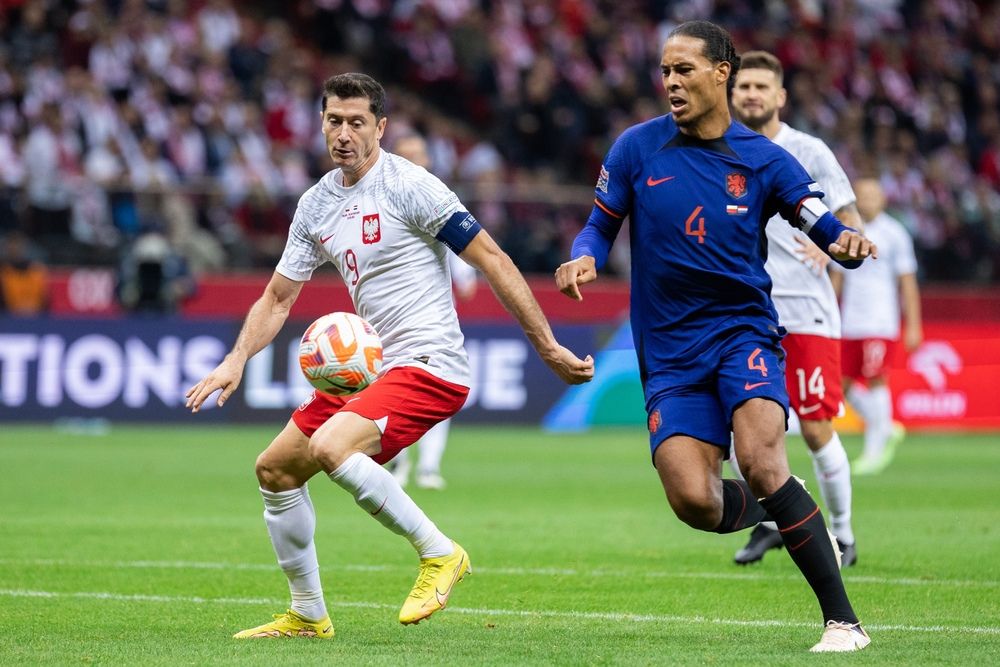
When opponent players are marked effectively, they tend to make more mistakes and find it difficult to dribble and give accurate passes. Before other forms of marking took center stage in soccer, man-marking was prominent between the 1920s and 50s.
During this era in soccer, most teams utilized the W-M formation which encouraged man-marking. One of the known cons of man-marking is that once opponent players move out of range from their markers, they become difficult to track.
Marking in soccer is becoming more flexible. Below is a list of the old and new marking methods and how they work.
Zonal Marking
Unlike in man-marking, in zonal marking, each player is assigned to a zone or area on the soccer pitch to mark. Such players are supposed to mark and try to retrieve balls from opponents when it enters their assigned zones—regardless of the player with the ball.
Players aren’t allowed to mark opponents that aren’t in their zones yet or else in critical situations where it is unavoidable. This tactic prevents defenders from working too hard on the pitch because the marking responsibility is equally shared.
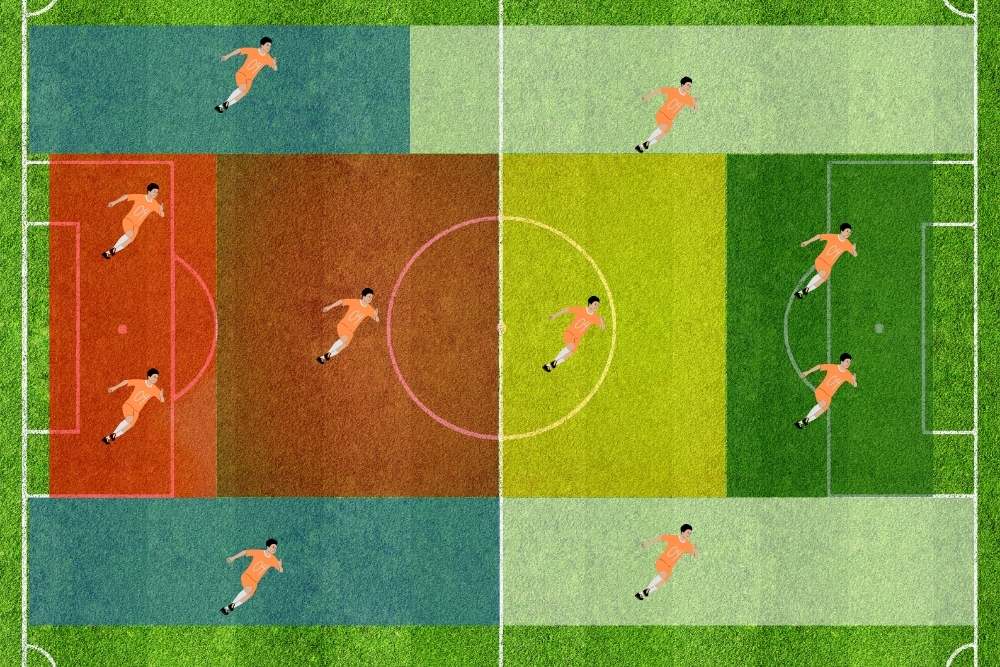
Flexibility remains its biggest advantage over man-to-man marking because players can easily initiate an attack after they succeed in retrieving balls from opponents.
In zonal marking, players are expected to communicate effectively amongst themselves to prevent flimsy mistakes from occurring. Zonal marking isn’t advisable during corners and free kicks. Man marking is preferable in such situations.
While executing this marking technique on the pitch, remember that the arrangement of your team matters a lot. You can move as a single unit to make it harder for opponents to advance deep into your half of the field.
While Marco Silva was coaching Everton, he applied zonal marking a lot against his opponents. In the 2004 UEFA Champions League, 15 teams that made it up to the knockout stages utilized the zonal marking technique.
To make this marking technique clearer to you, let’s take a look at the steps involved.
- The defenders should arrange themselves in a block of 4 to 6 players and try marking opponents as a single unit while maintaining their zones
- Always take time to reorganize the block when opponents are out of reach and pass the ball among themselves. By doing this, you can control the passing options of your opponent when they try to attack
- To effectively control your opponent’s passing options, you must know when to either increase or decrease the compactness of the team or increase pressure outside the block.
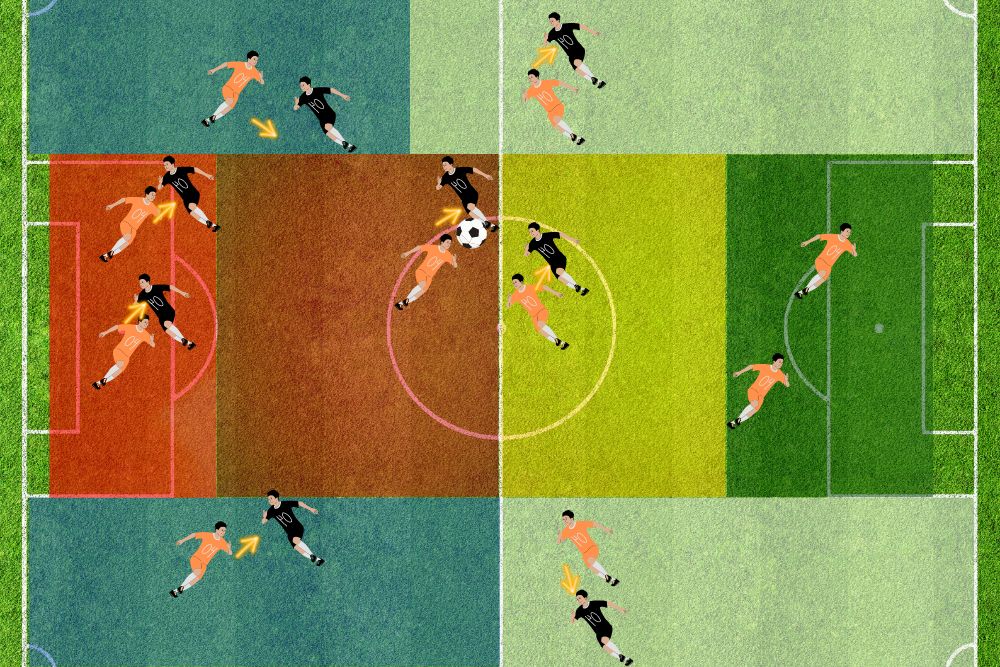
- Applying pressure outside of the block will force opponents to retreat and give you a chance to rearrange the block.
- Note that opponents may switch play along the wings to break your zonal block. Don’t be tricked easily. Maintain your formation.
- Always check the position of your teammates on the block before applying pressure across your zone.
- You can trick opponents by creating a trap inside your block. When they give passes to their teammates in the trap, you outnumber and pressure them into giving up the ball.
- It is advisable to man-mark the key player in a team while also performing a zonal marking.
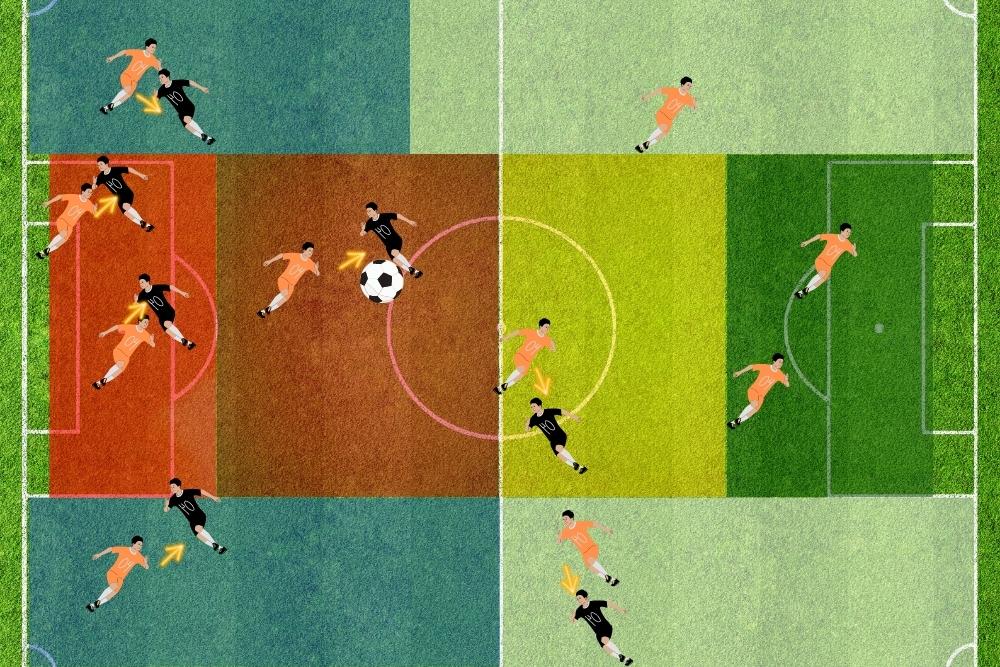
The zonal marking technique is mostly used when teams are using the 4-4-2 formation. This marking technique doesn’t necessarily require players to have great stamina or be exceptionally fast like we have in man-to-man marking.
The Spanish legend, tactical genius, and former Liverpool coach Rafa Benitez utilized the zonal marking technique very well during his tenure as Liverpool’s head coach.
During this period, Liverpool conceded the least number of goals at home. This proves that zonal marking is an effective strategy when properly utilized.
Pros of zonal marking
- It makes defending flexible.
- Allows a team to remain united and proactive on the pitch
- Doesn’t give the opposition time to settle
- Shield players from getting easily overrun by opponents
Cons of zonal marking
- It keeps the defending team somewhat static
- Miscommunication may occur
Mixed marking
You will hardly find situations in modern soccer where teams stick to a single marking technique. Before deciding the suitable marking techniques to use during matches, coaches must first consider certain variables.
These include the status of available players, size and stature of opponents, formation, speed and skill level of opponents, etc. Coaches usually train players on various marking techniques to use against opponents based on the aforementioned factors.
In mixed marking, teams can equally combine man-marking and zonal marking at the same time for optimal effect. You can see this in most of Liverpool’s matches where they often deploy the 4-5-1 or 4-4-1-1 formation when taking the lead in the concluding stages of games.
Such formations allow them to mark zonally while deploying a striker to perform a space-oriented man-marking on opponents.
The mixed or hybrid system is quickly becoming the preferred marking technique in the world of soccer.

Let’s now take a look at the steps involved in performing the mixed system of marking.
- 3 to 5 players are first assigned the zonal responsibility of defending their side of the field
- The rest of the players are either given man-marking tasks or strictly positioned at critical areas of the field for counterattacks
- During corner or free kicks, the zonal markers would arrange themselves around the 6-yard box to protect the goals area
- These players must be preferably tall and have good headers
- The remaining players can mark the most dangerous players on the opponent’s team, making it hard for them to reach the ball
The mixed marking technique requires great concentration, good communication, and a vast level of coordination. The effectiveness of this marking technique has been hailed by prominent soccer coaches all over the world.
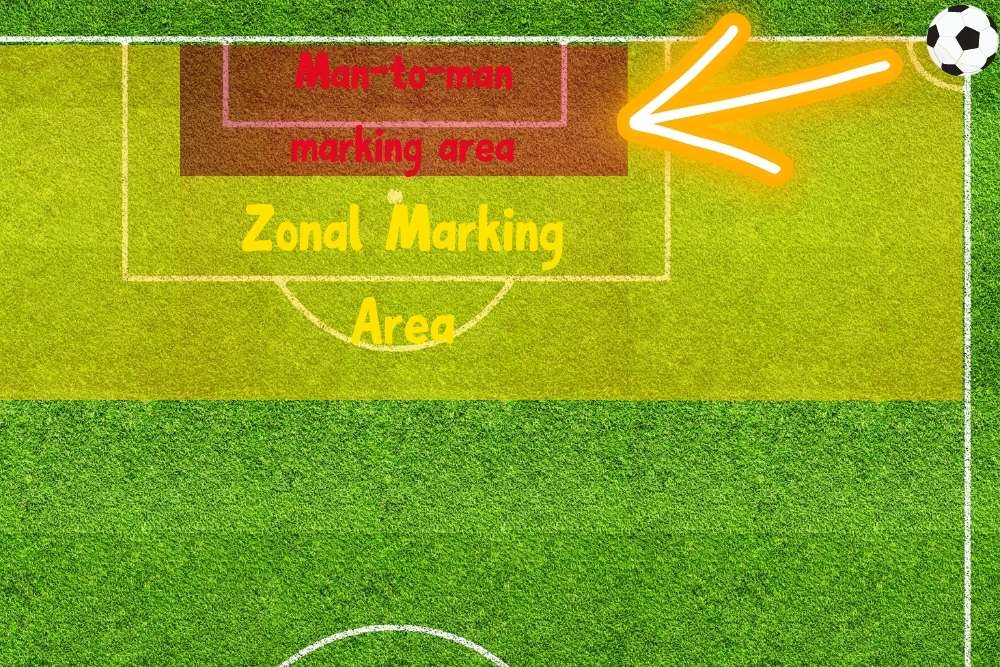
Pros of mixed marking
- Has fewer communication problems
- It is flexible
- Proven to be effective
Cons of mixed marking
- Require special training.
Man-to-man marking
As we mentioned earlier, this marking technique is the oldest in the sport. In man-to-man marking, every player is tasked with tracking and marking just a single player on the pitch throughout a match.
It is mostly used in modern soccer during set pieces and when marking exceptional players who can easily score or create goal-scoring opportunities. It has numerous advantages and disadvantages depending on where and how it is being applied.
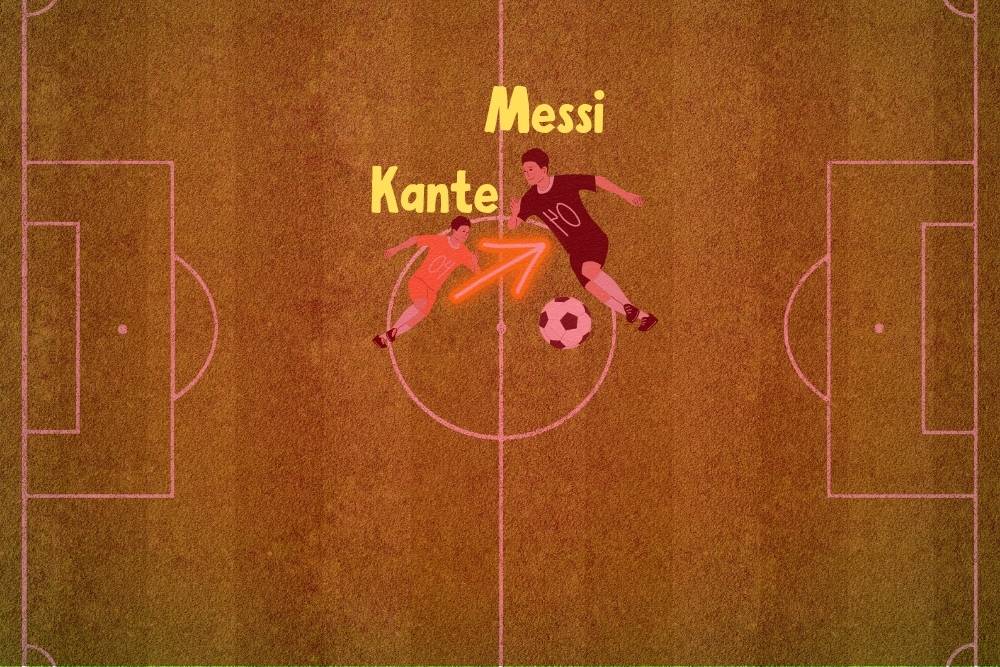
A lot of things can go wrong during man-marking, for example, opponent players can skillfully implement positional rotations. This tactic will confuse their markers by creating chaos in the entire defensive structure thereby leaving teams vulnerable to attack.
Flexible man-marking can be used in curtailing this problem because it allows players to switch opponents when necessary.
Man-marking has improved drastically over the years due to factors like advancement in technical concepts, smarter skills, improving speed among soccer players, and general improvement in how soccer is played.
This general improvement in how soccer is played brought about the space-oriented man-marking technique. It requires players to operate like a single unit when marking opponents.

Man-to-man marking might look easy but we can’t bypass the fact that players go through rigorous training sessions while trying to perfect this defensive tactic. You must pick a player you can match up to if you don’t want to get humiliated on the pitch.
Slow or weak players might not be able to keep up with this type of marking because it requires a lot of strength and speed. When players are paired correctly in man-marking, it greatly reduces the danger posed by opponents.
Below are some important tips that can improve your man-marking skills when considered.
- While making sure to retain the opponent player in front of you, keep your eyes on them as well as on the ball
- Hustle for the ball when it is in the air and don’t allow the opponent to turn their back towards the goalpost without blocking them
- Don’t break the defensive block formed by your teammates and always make sure to move back to protect the goalpost after chasing down your mark
- Don’t always rush after your opponent without first securing support from your teammates
You should always maintain a short distance between yourself and the player you are marking so that you can have a clear view of the soccer ball at all times. Being too close to your opponent will make it easier for them to confuse you easily.
Pros of man-to-man marking
- It neutralizes the opponent’s key players
- Doesn’t have many communications problems
- Effective for set pieces like close-range free kicks and corner
Cons of man-to-man marking
- It is aggressive and can lead to injuries
- Some players are too skilled that one player may not be enough to mark them
Conclusion
It is compulsory to know how to mark players in soccer. This, in addition to other soccer skills, will help your team to perform better.
Perfecting techniques on how to mark opponents wouldn’t be enough without having a good knowledge of when to apply each marking technique. The most effective marking technique should consider the formation and quality of players in the opponent’s team.
For example, in most instances, using zonal marking during set pieces is a dumb move that your team might pay for by conceding a goal.
Most games never turn out like they were planned on paper. Therefore, every team should be able to adapt and change their marking technique depending on the flow of the game.
Hi there, I’m Jay.
Soccer is everything in my life! My friends and I have created this blog with all our enthusiasm, passion, and understanding after years of playing pro soccer. Hope you will enjoy it!
